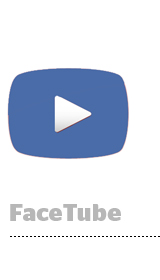 Watch out YouTube. Facebook is coming for your video ad honeypot.
Watch out YouTube. Facebook is coming for your video ad honeypot.
In his first week back in the saddle after the birth of his daughter Maxima, CEO Mark Zuckerberg told investors on the company’s Q4 earnings call that Facebook will explore the launch of a video-specific property, possibly an app that would compete with Google for video audiences and content creators.
“We’re exploring giving people a dedicated place on Facebook for when they just want to watch videos,” he said.
Zuck demurred when pressed for more details by an analyst, but he did offer some color around Facebook’s approach to standalone apps such as Facebook Messenger (800 million-plus users), Instagram (400 million-plus) and WhatsApp (1 billion-plus), which have been huge successes.
“The ones that have done the best are things that augment the core Facebook functionality for large subsets of the community,” Zuckerberg said. By way of example, he cited the Pages Manager app, which helps business owners optimize their Facebook presence.
Given the dramatic rise in video consumption on Facebook, the video app rollout could pose the first real challenge to YouTube’s dominance in snackable video content the platform has faced since Google paid $1.65 billion to acquire it 10 years ago.
Investors tend to salivate over the ad rates associated with video ads, but COO Sheryl Sandberg sought to temper expectations. It’s important to note, she said, “video ad spend is not all incremental. Whenever we introduce a video ad format in news feed, it replaces another ad.”
And she acknowledged Facebook’s brand of video advertising – silent, autoplay – is not always an easy sell. “One of the challenges we have in the market is convincing agencies … to experiment with different formats.” [Read AdExchanger’s recent coverage of Facebook’s video ad ambitions.]
From an overall ad revenue standpoint, Facebook saw dramatic growth that surpassed most analyst estimates, led by mobile. Mobile ad revenue totaled $4.5 billion and now accounts for more than 80% of all revenue. Three years ago it was just over 20%. (PC ad impressions declined, continuing a trend that started several quarters ago.)
Part of its revenue acceleration is thanks to Instagram, which activated programmatic monetization in Q3, and Audience Network, which has achieved a $1 billion run rate. But CFO David Wehner said the core Facebook platform is the primary driver of the top-line revenue growth.
Wehner added that ad load had notably improved. “Improving the quality and the relevance of ads has enabled us to show more of them without harming the experience,” he said.
Sandberg highlighted the company’s work on vertical-specific marketing. For instance, she said Facebook is helping telecoms target consumers whose voice or data plans are about to expire. And she noted political campaigns can target by congressional district, and are doing so in large numbers this campaign cycle.
Facebook was characteristically close-lipped about its ad tech ambitions, offering only broad strokes that revealed nothing about the traction of its LiveRail and Atlas platforms.
“We continue to invest in ad tech and are especially pleased with growth of Audience Network,” was all Sandberg would say.














